Bibliography: Books & Articles
Please note this is the full bibliography. For the short list for the 8-Week Program, please see here.
[Please note this bibliography is for the 8-week program “Introduction to the Middle Way”. It is not intended as a general introduction to Buddhism]
Madhyamaka

Chandrakirti’s Madhyamakavatara with commentary by Mipham Rinpoche, translated by Padmakara Translation Group following Dzongsar Khyentse Rinpoche’s teachings on Madhyamaka taught at Centre d’Études de Chanteloube, Dordogne, France 1996-2000.
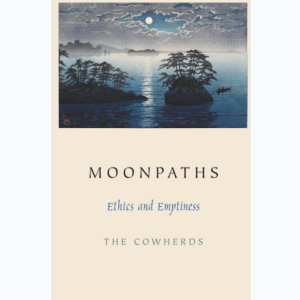
[From press release]: The Mahayana tradition in Buddhist philosophy is defined by its ethical orientation – the adoption of bodhicitta, the aspiration to attain awakening for the benefit of all sentient beings. And indeed, this tradition is known for its literature on ethics, which reflect the Madhyamaka tradition of philosophy, and emphasizes both the imperative to cultivate an attitude of universal care (karuna) grounded in the realization of emptiness, impermanence, independence, and the absence of any self in persons or other phenomena. This position is morally very attractive, but raises an important problem: if all phenomena, including persons and actions, are only conventionally real, can moral injunctions or principles be binding, or does the conventional status of the reality we inhabit condemn us to an ethical relativism or nihilism? In Moonpaths, the Cowherds address an analogous problem in the domain of epistemology and argues that the Madhyamaka tradition has the resources to develop a robust account of truth and knowledge within the context of conventional reality. The essays explore a variety of ways in which to understand important Buddhist texts on ethics and Mahayana moral theory so as to make sense of the genuine force of morality.
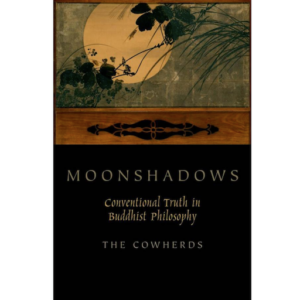
[From press release]: The doctrine of the two truths – a conventional truth and an ultimate truth – is central to Buddhist metaphysics and epistemology. The two truths (or two realities), the distinction between them, and the relation between them is understood variously in different Buddhist schools and is of special importance to the Madhyamaka school. The fundamental ideas are articulated with particular force by Nagarjuna (2nd-3rd century CE) who famously claims that the two truths are identical to one another, and yet distinct. One of the most influential interpretations of Nagarjuna’s difficult doctrine derives from the commentary of Chandrakirti (6th century CE). While much attention has been devoted to explaining the nature of the ultimate truth in view of its special soteriological role, less has been paid to understanding the nature of conventional truth, which is often described as “deceptive,” “illusion,” or “truth for fools.” But conventional truth is nonetheless truth. This book therefore asks, “what is true about conventional truth?” and “What are the implications of an understanding of conventional truth for our lives?”
See also: Glossary (Two Truths)
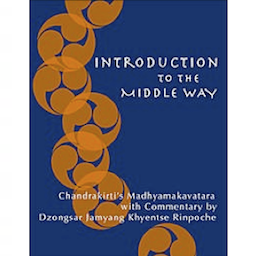
Commentary on Chandrakirti’s Madhyamakavatara taught at Centre d’Études de Chanteloube, Dordogne, France from 1996-2000. Edited and annotated by Alex Trisoglio. French and Russian translations available. Reference text for 8-Week Program Introduction to the Middle Way.
See also: Glossary (Madhyamakavatara)
Free download [PDF]: ➜Siddhartha’s Intent [To download: click on link Go to publication request form and select Madhyamakavatara – Introduction to the Middle Way in English, French or Russian].
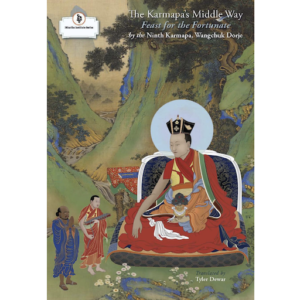
[From press release]: Marked by eloquent poetry, vigorous and extensive analysis and heart instructions on breaking through the veils of confusion to independently experience the true nature of things, The Karmapa’s Middle Way contains the Ninth Karmapa Wangchuk Dorje’s comprehensive commentary on Chandrakirti’s Madhyamakavatara. This commentary, Feast for the Fortunate, is the Ninth Karmapa’s abridgement of the Eighth Karmapa Mikyo Dorje’s masterpiece, the Chariot of the Takpo Kagyu Siddhas.
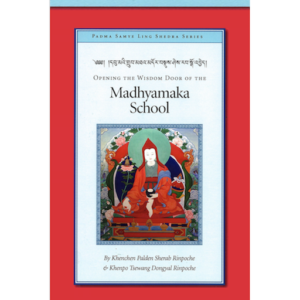
In this work, Khenpo Palden Sherab introduces the Yogacara-Svatantrika-Madhyamaka view, drawing on the great masters Shantarakshita, Longchenpa and Jamgön Mipham. These teachings form the basis for understanding the Prajñaparamita view and practice, as well setting out a foundation for Vajrayana and Dzogchen.
See also: Siddhartha’s Intent instructor Jakob Leschly conducted an online seminar series (February/March 2017) to study this book. Recordings are available for purchase from ➜Siddhartha’s Intent.
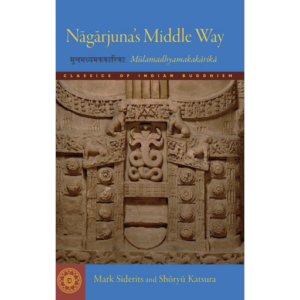
An award-winning translation of the Mulamadhyamakakarika, Nagarjuna’s foundational text that sets out the Madhyamaka view. In their introduction, Siderits & Katsura offer an excellent overview of the core set of presuppositions about dharmas (phenomena) common to the Buddhist Abdhidharma schools, and how Nagarjuna sets about establishing the view of emptiness by refuting the existence of dharmas:
Nagarjuna does not deny that this is what dharmas would be like. Instead he rejects the further implication that there actually are dharmas. His position is that if there were ultimately real things, they would be dharmas, things with intrinsic nature; but there cannot be such things. Not only are the person and other partite things devoid of intrinsic nature and so mere conceptual fictions, the same holds for dharmas as well. This is what it means to say that all things are empty.
[From press release] Nagarjuna’s renowned twenty-seven-chapter Fundamental Verses on the Middle Way (Mulamadhyamakakarika) is the foundational text of the Madhyamaka school of Mahayana Buddhist philosophy. It is the definitive, touchstone presentation of the doctrine of emptiness. Professors Siderits and Katsura prepared this translation using the four surviving Indian commentaries in an attempt to reconstruct an interpretation of its enigmatic verses that adheres as closely as possible to that of its earliest proponents. Each verse is accompanied by concise, lively exposition by the authors conveying the explanations of the Indian commentators. The result is a translation that balances the demands for fidelity and accessibility.
Winner of the 2014 Khyentse Foundation Translation Prize.
See also: Glossary (Mulamadhyamakakarika)
Buddha-nature
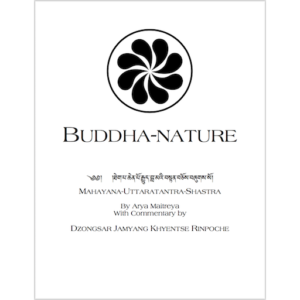
Commentary on Arya Maitreya’s Uttarantantra-Shastra taught at Centre d’Études de Chanteloube, Dordogne, France from 2003-2004. Edited and annotated by Alex Trisoglio.
Free download [PDF]: ➜Siddhartha’s Intent [To download: click on link Go to publication request form and select Uttarantantra].
Introductions to Buddhism
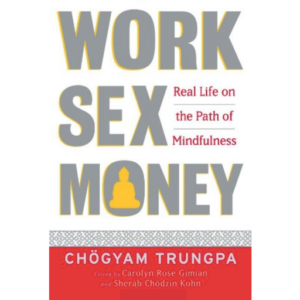
As the Japanese proverb says:
Vision without action is a daydream. Action with without vision is a nightmare.
The Middle Way teachings emphasize that developing the right view is essential if our attempts to “help” the world aren’t simply going to make things worse. The same sentiment is expressed here in the editor’s preface:
The world needs our help. But in order to help, we need to unlock and harness the spiritual wakefulness and inner resources we all possess.
Unlocking our “spiritual wakefulness and inner resources” is the path of practice. And as Trungpa Rinpoche points out, our practice isn’t just a question of what happens on our meditation cushion but about how we work in the world. It’s about “meditation in action”:
I regard myself as an ordinary person. I am a householder, who makes mortgage payments. I have a wife and three children whom I support. At the same time, my relationship with the teachings is inseparable from my whole being. I do not try to rise above the world. My vocation is working with the world. … There is a fundamental idea which refuses to divide things into this or that, sacred or profane, right or wrong. That is why I write and speak of meditation in action. It is much easier to appear holy than to be sane. So the idea is to separate spirituality from spiritual materialism. This requires a practice and some courage.
[From press release]: Each day we deal with the challenges of ordinary life: a series of mundane experiences that could be summarized by the title of this book, Work, Sex, Money. We all hope that these aspects of our life will be a source of fulfillment and pleasure, and they often are. Yet they are also always sources of problems for which we seek practical advice and solutions. The best prescription, according to Chögyam Trungpa, is a dose of reality and also a dose of respect for ourselves and our world. His profound teachings on work, sex, and money celebrate the sacredness of life and our ability to cope with its twists and turns with dignity, humour, and even joy.
He begins by breaking down the barrier between the spiritual and the mundane, showing that work, sex, and money are just as much a part of our spiritual life as they are a part of our everyday existence. He then discusses these subjects in relation to ego and self-image, karma, mindfulness, and meditation. “Work” includes general principles of mindfulness and awareness in how we conduct everyday life as well as discussion of ethics in business and the workplace. “Sex” is about relationships and communication as a whole. “Money” looks at how we view the economics of livelihood and money as “green energy” that affects our lives. The result is an inclusive vision of life, one that encompasses the biggest issues and the smallest details of every day.
There are, in fact, few definitive answers in these pages. There is, however, authentic wisdom providing us with tools we need to work with the toughest stuff in our lives.
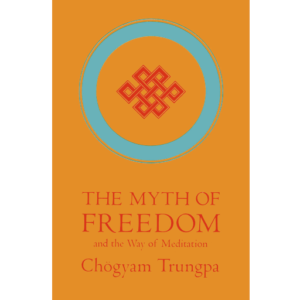
Dzongsar Khyentse Rinpoche has said that many of Trungpa Rinpoche’s teachings are terma – revealed treasures. The Myth of Freedom is filled with remarkably fresh re-interpretations of the Buddha’s core teachings that are both immediately relevant to the contemporary world while also embodying the non-dual wisdom of mahamudra. For example, in discussion ‘right intention’ (the 2nd of the 8 aspects of the Noble Eightfold Path), Trungpa Rinpoche says (pp. 94-95):
According to Buddha there is also “right intention.” In order to see what this is, we first must understand what Buddha meant by “right.” He did not mean to say right as opposed to wrong at all. He said “right” meaning “what is,” being right without a concept of what is right. “Right” translates the Sanskrit samyak, which means “complete.” Completeness needs no relative help, no support through comparison; it is self-sufficient. Samyak means seeing life as it is without crutches, straightforwardly. In a bar one says, “I would like a straight drink.” Not diluted with club soda or water; you just have it straight. That is samyak. No dilutions, no concoctions – just a straight drink. Buddha realized that life could be potent and delicious, positive and creative, and he realized that you do not need any concoctions with which to mix it. Life is a straight drink – hot pleasure, hot pain, straightforward, one hundred percent. So right intention means not being inclined toward anything other than what is. You are not involved in the idea that life could be beautiful or could be painful, and you are not being careful about life. According to Buddha, life is pain, life is pleasure. That is the samyak quality of it – so precise and direct: straight life without any concoctions. There is no need at all to reduce life situations or intensify them. Pleasure as it is, pain as it is – these are the absolute qualities of Buddha’s approach to intention.
[From press release]: Freedom is generally thought of as the ability to achieve goals and satisfy desires. But what are the sources of these goals and desires? If they arise from ignorance, habitual patterns, and negative emotions, is the freedom to pursue these goals true freedom-or is it just a myth?
In this book, Chögyam Trungpa explores the meaning of freedom in the profound context of Tibetan Buddhism. He shows how our attitudes, preconceptions, and even our spiritual practices can become chains that bind us to repetitive patterns of frustration and despair. He also explains how meditation can bring into focus the causes of frustration, and how these negative forces can aid us in advancing toward true freedom.
Trungpa’s unique ability to express the essence of Buddhist teachings in the language and imagery of contemporary American culture makes this book one of the best sources of the Buddhist doctrine ever written.
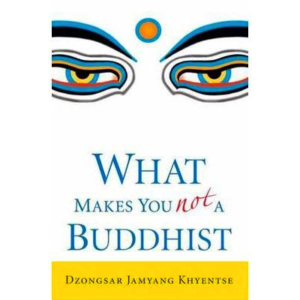
Dzongsar Khyentse Rinpoche’s first book, which gives introductory teachings on the Four Seals (impermanence, dukkha, non-self and nirvana), and explains why the view is the foundation of the Buddhist path and why it is important to study and practice the Buddha’s teachings on non-self.
[From press release]: Dzongsar Khyentse Rinpoche throws down the gauntlet to the Buddhist world, challenging common misconceptions, stereotypes, and fantasies. With wit and irony, Khyentse urges readers to move beyond the superficial trappings of Buddhism-beyond the romance with beads, incense, or exotic robes-straight to the heart of what the Buddha taught.
See also: Glossary (Four Seals)
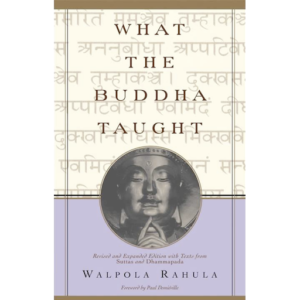 Rahula, Walpola (1974) What the Buddha Taught (Revised edition)
Rahula, Walpola (1974) What the Buddha Taught (Revised edition)
[From press release] This is a classic introduction to Buddhism – a comprehensive, compact, lucid, and faithful account of the Buddha’s teachings, “An exposition of Buddhism conceived in a resolutely modern spirit.”-from the Foreword. “For years,” says the Journal of the Buddhist Society, “the newcomer to Buddhism has lacked a simple and reliable introduction to the complexities of the subject. Dr. Rahula’s What the Buddha Taught fills the need as only could be done by one having a firm grasp of the vast material to be sifted. It is a model of what a book should be that is addressed first of all to ‘the educated and intelligent reader.’ Authoritative and clear, logical and sober, this study is as comprehensive as it is masterly.” The book contains a selection of illustrative texts from the original Pali texts, including the Suttas and the Dhammapada.

Zen Flesh, Zen Bones offers a collection of accessible, primary Zen sources on emptiness and nonduality allowing readers to grapple with the meaning of the Middle Way for themselves. It includes 101 Zen Stories, a compilation of koans by Nyogen Senzaki and a translation of Shasekishū, written in the 13th century by Japanese Zen master Mujū (無住) (literally: “non-dweller”); Mumonkan (The Gateless Gate), the famous 13th century collection of Zen koans. Well-known koans in the collection include A Cup of Tea (1), The Sound of One Hand (21), No Water, No Moon (29), and Everything is Best (31). Zen Flesh, Zen Bones also includes Ten Bulls, a 12th century commentary on the stages of awareness leading to enlightenment; and Centering, a 4,000 year-old teaching from India that some consider to be the roots of Zen.
Found in: koans and stories from 101 Zen Stories and the Mumonkan appear in the 8-Week Program as follows:
Purchase: ➜Amazon (1998 revised edition)
Mahayana sutras
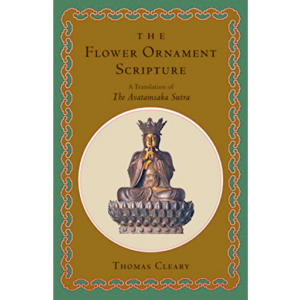
A complete translation of the Avatamsaka Sutra, including the Dashabhumika Sutra (Ten Bhumi Sutra), which is Chapter 26 (pages 695 to 811). Chandrakirti’s Madhyamakavatara is a commentary on Nagarjuna’s Mulamadhyamakakarika and also the Dashabhumika Sutra, which Chandrakirti uses both to structure his text and also as the source for his descriptions of the bhumis and their qualities.
[From press release] Known in Chinese as Hua-yen and in Japanese as Kegon-kyo, the Avatamsaka Sutra, or Flower Ornament Scripture, is held in the highest regard and studied by Buddhists of all traditions. Through its structure and symbolism, as well as through its concisely stated principles, it conveys a vast range of Buddhist teachings. This one-volume edition contains Thomas Cleary’s definitive translation of all thirty-nine books of the sutra, along with an introduction, a glossary, and Cleary’s translation of Li Tongxuan’s seventh-century guide to the final book, the Gandavyuha, “Entry into the Realm of Reality.”
See also: Glossary (Dashabhumika-Sutra)

[From press release]: Khyentse Foundation and 84000: Translating the Words of the Buddha are pleased to announce the launch of The Sutra of The Teaching of Vimalakirti. The book is offered in two sections, a prefatory commentary by Dzongsar Khyentse Rinpoche, “A Celebrity Falls Sick,” and a new 84000 edition of Robert A. F. Thurman’s English translation of the acclaimed Buddhist sūtra, The Teaching of Vimalakirti.
Khyentse Rinpoche and Thurman have praised The Teaching of Vimalakirti:
“It’s difficult for those us living in today’s mundane world to swallow the truth when we hear it, and the Vimalakirti Sutra contains a great deal about the very highest of high truths. Don’t imagine, though, that the nature of the highest truth is mystical or mythological, because it isn’t. Although the absolute truth cannot be expressed, conceived or conceptualized, all the techniques and tools necessary to establish it have been laid out for us by the Buddha himself. The Vimalakirti Sutra… describes astonishingly effective methods for deconstructing anything and everything that is not the truth.”
– Dzongsar Khyentse Rinpoche
“Unmatched in its content-a quintessence of Mahayana doctrines, both of the profound and of the extensive categories-its aesthetic virtue, too, makes it an object of the connoisseur’s delight.”
– Robert A. F. Thurman
Vajrayana and Dzogchen

Introductory-level teachings covering the complete ngöndro path, starting with generating proper motivation and taking Refuge, then going through shamatha, Bodhicitta, Vajrasattva and mandala offering, and concluding with an introduction to Guru Yoga.
These notes are based on teachings on ngöndro given by Dzongsar Khyentse Rinpoche during the Pema Lingpa Tersar empowerments and transmissions given in Bartsham, Bhutan from 22 December 2013 to 9 January 2014. Compiled and translated into English by Khenpo Sonam Phuntsho.
Free download [PDF]: ➜Siddhartha’s Intent [To download: click on link Go to publication request form and select Teachings on Ngöndro].
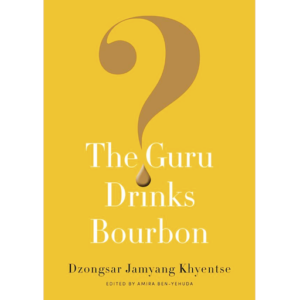
[From press release]: Devotion to one’s teacher is the lifeblood of the Vajrayana path. Because the guru can and will use whatever means it takes to wake us up, this relationship may require us to drop our most deeply held beliefs and expectations. Dzongsar Jamyang Khyentse addresses some of the most misunderstood aspects of this powerful relationship and gives practical advice on making the most of this precious opportunity for transformation. Through stories and classical examples, he shows how to walk the path with eyes wide open, with critical-thinking skills sharpened and equipped to analyze the guru, before taking the leap.

[From press release]: Do you practise meditation because you want to feel good? Or to help you relax and be “happy”? Then frankly, according to Dzongsar Jamyang Khyentse, you are far better off having a full-body massage than trying to practise the Dharma. Genuine spiritual practice, not least the Ngöndro preliminaries, will not bring the kind of comfort and ease most worldly people crave. Quite the opposite, in fact. But if your ultimate goal is enlightenment, Ngöndro practice is a must, and Not for Happiness your perfect guide, as it contains everything an aspiring practitioner needs to get started.
 Patrul Rinpoche, trans. Padmakara (2010) The Words of My Perfect Teacher (revised edition)
Patrul Rinpoche, trans. Padmakara (2010) The Words of My Perfect Teacher (revised edition)
[From press release]: A favourite of Tibetans and recommended by the Dalai Lama and other senior Buddhist teachers, this practical guide to inner transformation introduces the fundamental spiritual practices common to all Tibetan Buddhist traditions. The Words of My Perfect Teacher is the classic commentary on the preliminary practices of the Longchen Nyingtig-one of the best-known cycles of teachings and a spiritual treasure of the Nyingmapa school-the oldest Tibetan Buddhist tradition.
Patrul Rinpoche makes the technicalities of his subject accessible through a wealth of stories, quotations, and references to everyday life. His style of mixing broad colloquialisms, stringent irony, and poetry has all the life and atmosphere of an oral teaching. Great care has been taken by the translators to render the precise meaning of the text in English while still reflecting the vigour and insight of the original Tibetan.
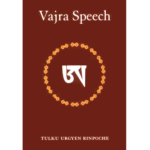
Vajra Speech serves as an extended glossary of philosophical and practice-related terms of relevance to the mahasandhi practitioner, and it offers a very valuable practice-oriented perspective on key Madhyamaka terms.
[From press release]: Vajra Speech, by Tulku Urgyen Rinpoche, renowned for his extraordinary experience and realization, is a wide ranging collection of pith instructions for the Dzogchen yogi.
“A swan can separate water and milk when drinking. The yogi should be like the swan in separating the milk of original wakefulness from the water of ignorance.”
-Tulku Urgyen Rinpoche
“Both Dzongsar Khyentse Rinpoche and myself felt that compared to many months and years of studying books and going through analytical meditation, it was more beneficial to spend just a few hours asking questions of Tulku Urgyen and listening to his answers.”
-Orgyen Tobgyal Rinpoche
Western academic perspectives on Buddhism
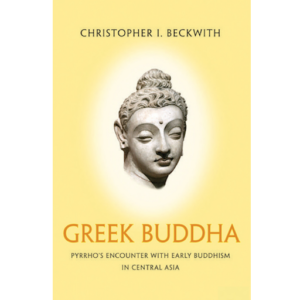
[From press release]: Pyrrho of Elis went with Alexander the Great to Central Asia and India during the Greek invasion and conquest of the Persian Empire in 334-324 BC. There he met with early Buddhist masters. Greek Buddha shows how their Early Buddhism shaped the philosophy of Pyrrho, the famous founder of Pyrrhonian scepticism in ancient Greece. Greek Buddha demonstrates that through Pyrrho, Early Buddhist thought had a major impact on Western philosophy.
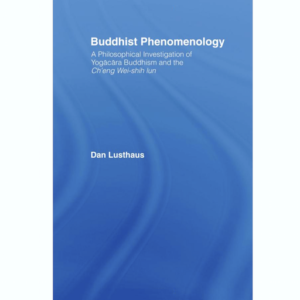
An advanced text that explores the view of the Cittamatra (Yogacara), showing that its focus is epistemological rather than ontological, and that it is best understood as a form of phenomenology rather than the common western view that it is a form of idealism.
[From press release]: A richly complex study of the Yogacara tradition of Buddhism, divided into five parts: the first on Buddhism and phenomenology, the second on the four basic models of Indian Buddhist thought, the third on karma, meditation and epistemology, the fourth on the Trimshika and its translations, and finally the fifth on the Ch’eng Wei-shih Lun and Yogacara in China.
[From Amazon.com customer review]: Arguably, there is no facet of Buddhism more misunderstood than Yogacara. Contrary to popular belief, among both scholars and Buddhists alike, Yogacara is not a form of idealism. The ‘mind-only’ label attached to Yogacara is a misnomer, especially when held against a Western philosophical backdrop. If you’re at all interested in what Yogacara Buddhism really is, then pick up a copy of Dan Lusthaus’s Buddhist Phenomenology […] Dan Lusthaus is a preeminent expert in Yogacara, a complicated and highly influential system of Buddhist thought. The book is nothing short of flawlessly thorough in every detail. Honestly, I am shocked that any single human being could know so much about one subject. It’s beyond impressive. So if Yogacara isn’t a form of idealism, what exactly is it? If you’ve ever read a Yogacara or hybrid-Yogacara text like the Lankavatara Sutra, you’ll remember there’s a lot of mention of ‘mind-only’; according to Lusthaus, this is not a denial of external reality, but rather a recognition that all experience occurs within consciousness. For this reason, he identifies Yogacara as a type of phenomenology a la Edmund Husserl. Lusthaus’s primary text of reference is the Ch’eng Wei-Shih lun, written in the 7th century CE by the Chinese monk Hsüan-tsang.
Found in: Glossary (imputed ignorance)
Western philosophy
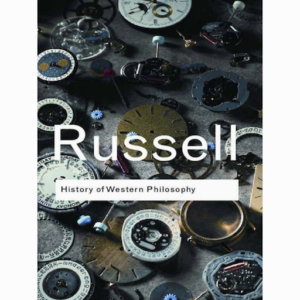
A survey of Western philosophy from the pre-Socratic philosophers to the early 20th century, cited as one of the books for which he was awarded the Nobel Prize for Literature in 1950. The Introduction and Book One: Ancient Philosophy are especially helpful in understanding the origins of philosophy (which is also highly relevant to Buddhist philosophy, even though Russell does not discuss Buddhism), as well as the philosophical views that were popular during the Buddha’s lifetime (e.g. Chapter 9 on The Atomists offers helpful context for understanding the atomistic early Buddhist philosophy of matter and consciousness that was held by the Vaibashika school, one of the views defeated by Chandrakirti).
Purchase: ➜Amazon (1967 edition)
Bibliography: Articles
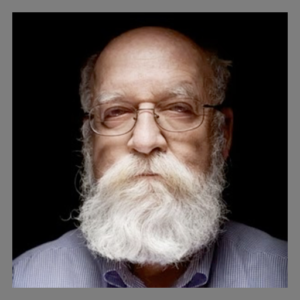 Dennett, Daniel (1992) “The Self as a Centre of Narrative Gravity”, in: F. Kessel, P. Cole and D. Johnson (eds.) Self and Consciousness: Multiple Perspectives.
Dennett, Daniel (1992) “The Self as a Centre of Narrative Gravity”, in: F. Kessel, P. Cole and D. Johnson (eds.) Self and Consciousness: Multiple Perspectives.
In this book chapter, Dennett presents a brilliant deconstruction of the truly existing self of the person, and like Chandrakirti he concludes that our idea of self is a baseless “theorist’s fiction”.

Garfield, Jay (2014) “What Does Buddhism Require?”, New York Times, 27 April 2014
Buddhist scholar and professor Jay Garfield discusses the relationship of Buddhism, philosophy and religion in an interview with philosopher Gary Gutting. He talks about what it means to be a Buddhist, and touches on the relationship between emptiness and compassion, a key theme of the first five chapters of the Madhyamakavatara:
“A strong sense of self – of one’s own substantial reality, uniqueness and independence of others – may not be psychologically or morally healthy. It can lead to egoism, to narcissism and to a lack of care for others. So the modern emphasis on individuality […] might not be such a good thing. We might all be better off if we each took ourselves less seriously as selves. That may be one of the most important Buddhist critiques of modernity and contributions to post-modernity.
More positively, the Buddhist tradition encourages us to see ourselves as impermanent, interdependent individuals, linked to one another and to our world through shared commitments to achieving an understanding of our lives and a reduction of suffering. It encourages us to rethink egoism and to consider an orientation to the world characterized by care and joint responsibility. That can’t be a bad thing.”
 Garfield, Jay (2010) “Buddhism in the West” , Info-Buddhism, 30 June 2010
Garfield, Jay (2010) “Buddhism in the West” , Info-Buddhism, 30 June 2010
Buddhist scholar and professor Jay Garfield explores how we can determine what is “authentic” Buddhism given the ways in which Buddhism has changed over the millennia and how the expression of the dharma continues to transform in the contemporary world:
Now when we look at this kind of panoply of changes wrought in the Buddhist tradition in the West and in Asia as a result of Buddhism’s interaction with the West, we might panic. We might say: “My God, It’s no longer authentic. It’s changed.” When we do that, we must remember to go back to ask the question: “What is Buddhism anyway? What makes a doctrine Buddhism?” Buddhism is fundamentally about solving a problem, and the problem is suffering. It’s fundamentally about a diagnosis of the cause of that problem, and the cause of that problem is attraction and aversion grounded in confusion. It’s grounded in the conviction that once we recognize that, the elimination of that confusion can solve the problem, and in a path to that solution. None of that has been abandoned; none of that has been fundamentally transformed, even though its articulation is transformed in countless ways.
He also points out that the Buddhist tradition has a different way of talking about progress than the modern West, but that the Buddhist emphasis on the continuity of the lineage can obscure the extent to which there has been innovation – and this innovation has been central to ensuring that Buddhism continues as a vibrant living tradition.

Garfield offers a very clear analysis of the Two Truths and valid/invalid relative truth, with a particular focus on Chandrakirti’s writings on the Madhyamaka. Here is an extract on mirages:
Among the many similes for conventional truth that litter Madhyamaka texts, the most fruitful is that of the mirage. Conventional truth is false, Chandrakirti tells us, because it is deceptive. Chandrakirti spells this out in terms of a mirage. A mirage appears to be water but is in fact empty of water-it is deceptive and, in that sense, a false appearance. On the other hand, a mirage is not nothing: It is an actual mirage, just not actual water.
The analogy must be spelled out with care to avoid the extreme of nihilism. A mirage appears to be water but is only a mirage; the inexperienced highway traveller mistakes it for water, and for him it is deceptive, a false appearance of water; the experienced traveller sees it for what it is-a real mirage, empty of water. Just so, conventional phenomena appear to ordinary, deluded beings to be intrinsically existent, whereas in fact they are merely conventionally real, empty of that intrinsic existence; to the aryas, on the other hand, they appear to be merely conventionally true and hence to be empty. For us, they are deceptive, false appearances; for them, they are simply actual conventional existents.
We can update the analogy to make the point more plainly. Imagine three travellers along a hot desert highway. Alice is an experienced desert traveler; Bill is a neophyte; Charlie is wearing polarizing sunglasses. Bill points to a mirage up ahead and warns against a puddle on the road; Alice sees the mirage as a mirage and assures him that there is no danger. Charlie sees nothing at all and wonders what they are talking about. If the mirage were entirely false-if there were no truth about it at all, Charlie would be the most authoritative of the three (and Buddhas would know nothing of the real world). But that is wrong. Just as Bill is deceived in believing that there is water on the road, Charlie is incapable of seeing the mirage at all and so fails to know what Alice knows-that there is an actual mirage on the road, which appears to some to be water, but which is not. There is a truth about the mirage despite the fact that it is deceptive, and Alice is authoritative with respect to it precisely because she sees it as it is, not as it appears to the uninitiated.
The chapter in Moonshadows is in almost all respects the same as a previously published paper in Philosophy East and West also titled “Taking Conventional Truth Seriously”, which is available for free download (see below).
Web: Garfield, Jay (2010) ➜”Taking Conventional Truth Seriously” [PDF], Philosophy East and West, Vol. 60, No. 3, 341-354

Overview of the philosophical beliefs of the Samkhya (also spelled Sankhya) school. Very helpful for understanding Chandrakirti’s negation of their views in 6:8-6:13, as the Madhyamakavatara does not articulate the views held by the Samkhya.

Excellent overview of how the Two Truths (conventional truth and ultimate truth) developed historically and how they are distinguished in the four major schools of Buddhism in India:
- 1. Abhidharmikas / Sarvastivada (Vaibhashika)
- 2. Sautrantika
- 3. Yogacara
- 4. Madhyamaka
Includes references to source texts for each of the four major schools. This material is covered briefly after Verse 6:23 in Dzongsar Khyentse Rinpoche’s teachings on the Madhyamakavatara (pp. 121-124 in the transcript Introduction to the Middle Way), and Thakchoe’s overview is very helpful if you would like to understand the views of these schools in more detail.
Found in: Week 3 (Two Truths), Week 4 (Cittamatra view), Week 5 (realism and representationalism)
Last updated 30 December 2017